- Get link
- X
- Other Apps
- Get link
- X
- Other Apps
Worst Plague in the history of mankind
 | |
| Germs are everywhere Germs are everywhere and they will always try to kill you. Right now as you sit on your computer or reading on your phone, all matters of deadly germs are crawling all over you and your hands, your chest, your face, in your mouth...there's nowhere they can't reach. Right, this second you have a 25% chance of carrying deadly staphylococcus bacteria, of staph infection infamy. Luckily for you though much like your own farts, your staph bacteria are generally harmless to you but staph bacteria from another person can give you a deadly infection. And if you are wondering where it lives, the answer is pretty much everywhere, to include your skin, eye, noes, and even your mouth. Generally, though it's bacteria that don't normally live on the human body that's deadly, and throughout history, mankind has been decimated by all forms of plagues but what were the deadliest plagues in history? Given down is a list of worst plague outbreaks ever happened to mankind. 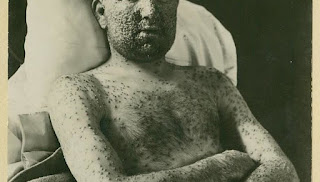 1. Smallpox, Back in the 15th century Europeans who weren't Vikings discovered the New World, and shortly after the discovery they made friends with the local natives, and nothing bad ever happened after that. Just kidding, Europeans very quickly got to work on their favorite historical pastime, subjugating and brutalizing native populations. This time though they had some extra help in the form of all manner of bacteria and viruses that Native Americans had never encountered before. Back when healthcare consisted of draining bad blood out and then dying to the resulting infection, Smallpox killed about One in three Europeans who got infected. Native Americans however had little to no resistance to the disease, and thus when they made contact with the Europeans the disease very quickly decimated Native American society. It's believed that between 1500 to 1900 European diseases killed up to half of all Native Americans, and most of that was purely by accident. It wasn't until the 1800's that the US Cavalry got the idea of heading out Smallpox infected blankets to Native Americans who were stubbornly settling on land the US had rightfully claimed. |
2. Cholera, Thousands of years ago when men first arrived in North America but forgot to tell everyone about the Cholera Pandemic. Cholera is one of those diseases that just never goes out of style, it's a die-hard classic, a real crowd-pleaser, and to date, there's been seven total Cholera pandemics throughout human history. The deadliest however is the third, which stuck between 1852 and 1860. For thousands of years, mankind paid little attention to the quality o it's drinking water, and or nearly all of human history literally nobody saw a problem with having your sewage run right next-to or into the drinking water supply. This worked out great or all maters of diseases, who took advantage of the terrible sanitation to wreak havoc on mankind. Cholera is one such disease, and during its third outbreak it's believed that it started its world comeback tour in India. With the Ganges river being one of the most important in the world as far as human settlements are concerned, it has long been one of the most polluted. In 2011 a report on the water quality of the river-related that the water contained 1.1 billion fecal bacteria per 100 millimeters, that's about half a million times the recommended bathing limit. Add to that practice of cremating corpses directly on the banks of the river and India's huge population, of which a large amount believe it is a sacred experience to bathe in the river, and it's little surprise that cholera has frequently struck the region. During the third outbreak through Cholera first struck in India then spread to Afghanistan, and slowly across to Russia where it killed an estimated 1 million people. From Russia it made it's way to Europe and Africa finally landing on the shores of America.
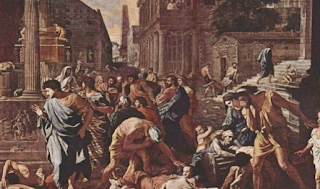 |
| Antonine Plague decimated ancient Rome |
3. Antonine Plague, Back in about 165 AD Rome had about two hundred good years left in her, and the plague that struck her from 165 to 180 AD is believed to have hastened her downfall. Today nobody knows exactly what disease struck the Romans, as back then doctors were just as likely to feed you mercury to cure your cough or give you mercury to cure your back pain. Seriously, those guys loved mercury and it's a little surprise so many prominent Romans were crazier than a barrel of angry monkeys. With an estimated death toll of five million whatever plague struck the Romans, it was clearly devastating and symptoms included fever, diarrhea, and inflammation of the throat. In some cities, one-third of the population scummed to the plague, and today historians believe that the culprit was either measles or smallpox. Luckily today we don't have to worry about either of those two devastating diseases, thanks to vaccines, expect yes we do!! thanks to the anti-vaxxers, who have refused to vaccinate their children leading to modern outbreaks of diseases mankind had all but eradicated.
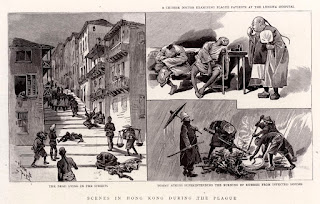 |
| The outbreak of third Bubonic plague in China |
4. Third Bubonic Plague, if cholera is a classic, the bubonic plague is a downright goldie oldie, this disease is caused by a nasty little bacteria who like to take over your lymph nodes and then literally makes your body kill you. In 1850 Chinese prospectors and entrepreneurs flooded the western Yunnan region in search of minerals and ores. Soon the population had exploded to over 7 million, and this created the perfect conditions necessary for the plague to revisit humanity. Plague infected fleas were soon biting all manner of people, acting as the primary vector between the yellow-breasted rat and humans. When Han Chinese and Hui Muslim miners got into armed conflicts over the mineral wealth of the area the plague exploded onto the scene. Thanks to the displacement of huge populations due to armed conflicts, the plague made it's way east towards Chinese shores. There it would kill 100,000 people in Hong Kong, and 60,000 in Canton. Aboard trade ships the disease made it's way to India, Where it would go on to kill 10 million. Over the next 30 years, it would kill another 12.5 million. On a side note, the restrictive actions of the British government are trying to contain the plague that would foster much of the discontent that would later lead to an Indian Independence Moment.
 |
| Plague of Justinian, first recorder plague in history |
5. Plague of Justinian, Four hundred years after the Antonine Plague, rats in a grain shipment from Egypt brought the deadly bubonic plague back to Europe. In 541 AD half of the population of Constantinople, then the capital of the western Roman Empire died to the plague, and from there the disease spread across Europe. Incredibly, historians believe that the bubonic plague actually prevents the rise of a new Roman Empire as it weekend the Western Roman empire so severely that it was unable to triumph over the Goths and reunite the Eastern Roman Empire with the west over a new Roman empire. After killing between 25 and 100 million across Europe and Asia, the plague once more faded, though it would return sporadically until the last outbreak in 750 AD, as if killing hundreds of millions of people throughout history wasn't bad enough, we also have the bubonic plague as the failure of Constantinople to reunite the Roman Empire, and there's no telling what the world of today might look like if a unified Rome had averted the dark ages.
 |
| HIV and AIDS |
6. HIV/AIDS, ask anybody who grew up in the 80's what the most freaked acronym they ever heard was and they tell you without hesitation, it's AIDS. A disease originated in Africa, it first stuck the civilized world in a major fashion in America, where it was initially identified in homosexuals. This, unfortunately, led to the stereotype that HIV or AIDS was only a gay disease, and thus a lack of safe sex techniques between heterosexuals quickly led to the disease infecting millions around the world. Today 600 peoples a day contract HIV, and in some parts of Africa as much as 15% of the population is infected. As of 2017, 39 million people had died of HIV, out of 76.3 million who have been infected. Thanks to safe sex practices and education, infection rates have finally slowed, and the world seems to be on the other side of the peak of the HIV pandemic, though not by very far. New treatments offer ways to cope with the disease and even prevent its outbreak from HIV into AIDS, but these treatments are expensive and populations that need the most are poor third world individuals. So, simply they can't afford them. A failure to treat these vulnerable populations inevitably leads to infections across the rest of the world thanks to our modern interconnected world. Standing for Acquired Immune Deficiency Syndrome, AIDS is a condition caused by the human immunodeficiency virus or HIV. AIDS can take years to manifest, but when it does it is characterized by HIV's aggressive attacks against the immune system, destroying white blood cells and T-cells which help fight off infections. Your immune system is constantly working to keep you healthy, and our environment is swarming with all matter of harmful bacteria, viruses, and fungi that are looking to turn you into a snack. Without your immune system working properly AIDS leads to death from all matter of secondary infections and unless treated early is almost certainly fatal.
 |
| Hospitals during The Spanish flu pandemic |
7. Spanish Flu, At the end of World War 1, Europe was in a sorry state. The war had ravaged the countryside and displaced millions of people. Food supplies were low and the clean drinking water was rare. Add to that huge numbers of dead and the concentration of wounded still being treated in makeshift hospitals, and you had conditions ripe for a pandemic. As you can read in my previous article, 'The Spanish Flu', despite having nothing to do with Spain or Spanish, the Spanish flu struck soon after the end of the war and appeared almost simultaneously in Boston, USA, Breast, France, and Freetown, Sierra Leone. Thanks to air and ocean travel the flu virus spread around the world. Yet the flu virus was not a particularly different strain of the same flu you might catch today, all flu viruses mutate over time, but despite what people initially thought this was not some superbug. Poor sanitary conditions, the concentration of wounded troops in massive field hospitals, and poor nutrition for the wartime population had instead created a world just ripe for the flu to become truly deadly. The most at risk were the young and elderly, but with so many combats wounded and malnourished civilians, the flu is thought to have killed between 50 and 100 million.
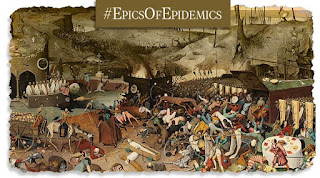 |
| Epics of Epidemic - The Black Death |
8. The Black Death, To date there has been no epidemic more deadly than black death, or bubonic plague though it should be noted that the disease had struck many times before it went blockbuster in 1347, as you can read in one of my articles, 'The Black Death'. Arriving from the plains of central Asia where climate change was forcing infected rodents into human population centers, the plague quickly spreads from Asia westwards towards Europe leaving trail devastation in its wake. Across the Islamic world, the black death killed millions after arriving in Egypt from Constantinople. All told the outbreak killed between 75 to 200 million people, and it took humanity two whole centuries to recover the whole number. The disease inflamed major tensions across various social groups, and shortly after the plague receded in 1353, major violence against minorities in Europe exploded, as everybody from Gypsies to Jews was blamed for the seeming supernatural plague. On the bright side though, the plague killed so many people that it created a massive labor shortage, and this left nobles without enough peasants to work their lands, with the bargaining chips firmly on their side, the peasantry was able to use the value of their labor to demand better wages and living conditions, laying the foundations for many of the major labor movements that would redefine Europeans and world history in later centuries. Without the black plague and it's the deadly impact on humanity, modern labor moments that brought us the two day weekend, sick days, paid vacations and other perks we enjoy and expect from jobs today may never have existed.
Do you think we are due for another major plague? How would you survive a major outbreak of disease?
Feel free to drop some comments about that.
Antonine Plague
Black Death
deadliest plague
health
HIV/AIDS
pandemic
Plague of Justinian
Smallpox
spanish flu
Third Bubonic Plague
Virus and Plague
- Get link
- X
- Other Apps
Comments
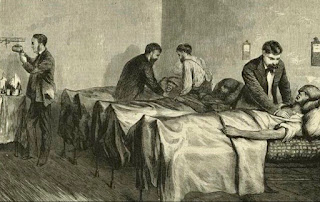
Wow man this is a really nice blog. It's quite informative.
ReplyDeleteThanks for the support man!
Delete